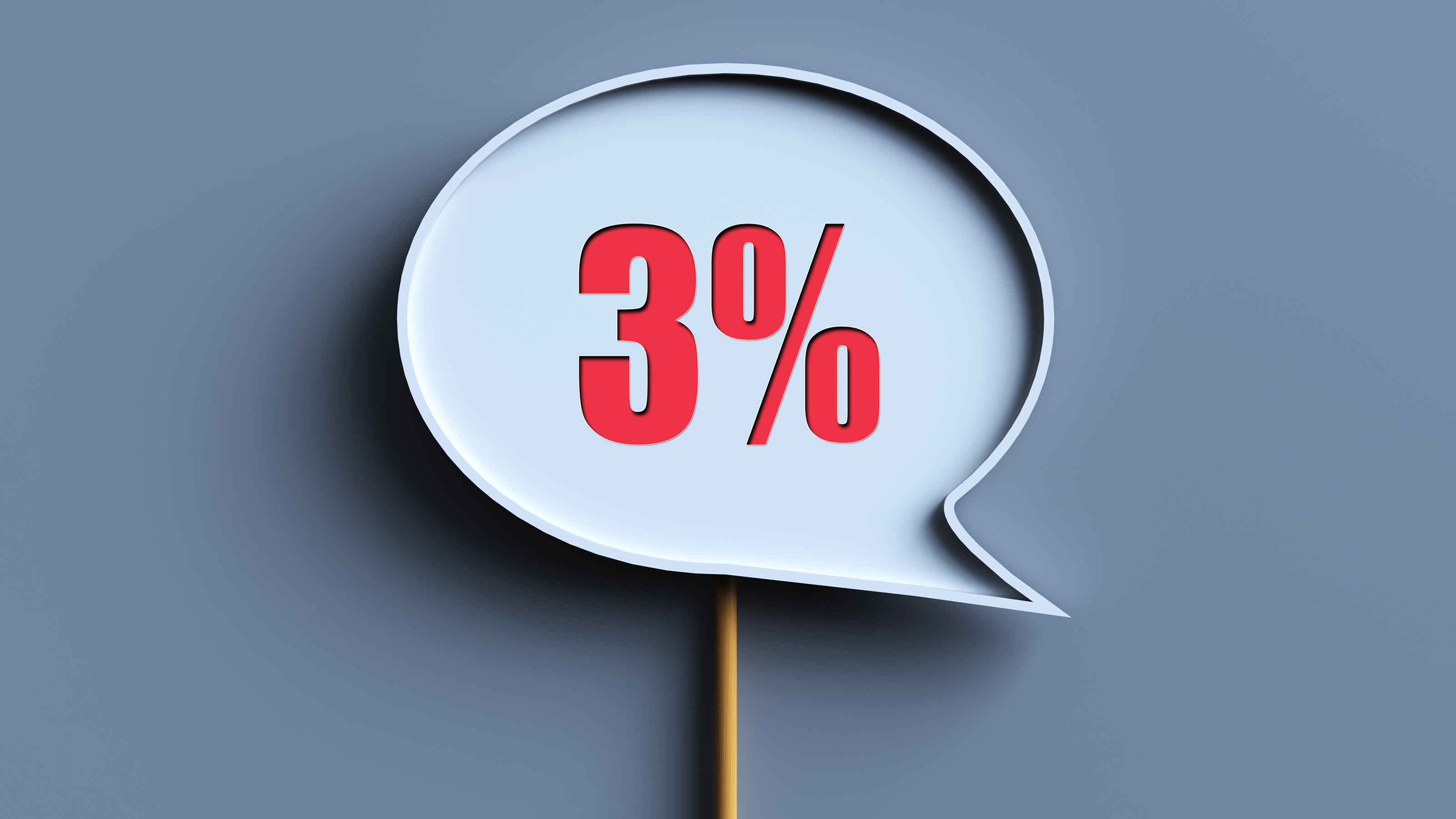Benefits of Charitable Contributions You May Be Overlooking
There are many tax, estate and income benefits when you donate to charity, especially if you make use of a charitable remainder trust (CRT).


Donating to charity is a great way to support a cause that matters to you. Your contribution can make real change, providing resources and opportunities to those in need. However, this act of kindness goes beyond simply giving back.
With proper planning and guidance, charitable contributions can enhance your financial plan, providing tax cuts while generating income.
It probably sounds too good to be true. How can you possibly save money and make money at the same time? The answer is through a charitable remainder trust (CRT).
From just $107.88 $24.99 for Kiplinger Personal Finance
Be a smarter, better informed investor.

Sign up for Kiplinger’s Free Newsletters
Profit and prosper with the best of expert advice on investing, taxes, retirement, personal finance and more - straight to your e-mail.
Profit and prosper with the best of expert advice - straight to your e-mail.
How a charitable remainder trust works
A CRT is an estate and financial planning tool primarily designed to reduce your taxable income. This tax-exempt irrevocable trust fund allows you, the trustor, to make contributions that are eligible for a partial tax deduction. These contributions can be cash, property, private business interests and stocks.
Once these contributions are made, the trust will then pay one or more noncharitable beneficiaries for a specified time that cannot exceed 20 years, or the life of noncharitable beneficiaries. You can structure the trust to disperse payments annually, semiannually, quarterly or monthly. Once that time expires, or the trustor dies, the remaining funds will go to the designated charity(s).
When it comes to taxes, eligible donations are tax-deductible so long as the recipient is a 501(c)(3) charitable organization, according to the IRS. The type of deduction you receive depends on the trust’s type, term, projected income payments being paid to the charity and the interest rates set forth by the IRS. There are also different deductions available for different assets being donated, and each has its limitations.
For example, cash deductions generally cannot exceed 60% of your adjusted gross income (AGI). So, if your AGI is $70,000, you can deduct up to $42,000 in cash donations. If your deductions exceed this amount, you can typically carry over the extra amount — deducting it in future tax years.
Noncash items carry their own deductions. If you’re donating appreciated assets such as real estate, stocks, artwork or other valuable goods, you can deduct the fair market value from your taxable income. Donating appreciated assets allows you to avoid capital gains tax, cutting down the tax bill you would get if you were to sell the items.
Another donation option available to you is an IRA charitable rollover. This method, also known as qualified charitable contributions (QCDs), allows you to transfer funds directly from your IRA to the qualified charity of your choosing, thus excluding it from your taxable income. However, since it is a retirement account, you must meet a few requirements to get the tax benefit. The funds must go directly from the IRA to the charity. You cannot withdraw the money first and then donate it. You must also be at least 70½ to donate. There are limitations to how much you can transfer. According to the IRS, qualified owners can transfer up to $100,000 to charity, tax-free, each year.
How to claim these deductions
With the exception of IRAs, the key to claiming these deductions is to itemize them when you file your taxes. You’ll also need to prove that you actually made these donations in order to claim them once you file, so be sure to keep your receipts. Donations of more than $250 require a receipt.
In addition to various tax benefits, CRTs can provide some benefits to the estate planning process. Since these trusts cannot be modified or terminated without permission from the charitable beneficiary, the trustor is effectively giving up ownership rights of the assets transferred to the trust and the trust itself. This means the trust will not be included in the probate process once the trustor dies. The CRT is also exempt from estate taxes and can be transferred to the listed beneficiary immediately.
Making charitable contributions creates a win-win scenario for both you and the charity of your choice. Charitable donations allow you to support causes that are important to you while simultaneously creating an income stream and tax cuts. Note that the tax benefits, income stream and estate planning ease a CRT can provide you are dependent on your situation.
If you’re thinking about incorporating this giving strategy into your portfolio, do some research. Identify a cause that is important to you, then consider meeting with a financial adviser. They can help you establish a CRT that works for you, maximizing your tax deductions and income stream.
Related Content
- Six Charitable Giving Strategies: Feel Good and Cut Your Taxes
- DAFs vs. Private Foundations: Which Giving Strategy Is Right for You?
- How to Maximize Your Impact With Strategic Philanthropy Tools
- Retirees: Make Your Money Last With Stable Income Strategies
- How You Can Tackle Health Care Costs in Retirement
Profit and prosper with the best of Kiplinger's advice on investing, taxes, retirement, personal finance and much more. Delivered daily. Enter your email in the box and click Sign Me Up.

Joel Russo is a New Jersey native and has been in the financial services industry for more than 35 years. He is dedicated to helping his clients reap the rewards of a well-planned retirement. Unlike many financial professionals, Joel specializes in the retirement market, "the over-50 crowd” and has dedicated his practice to educating this community with workshops on topics relating to income from the right sources, taxes in retirement, RMD pitfalls and legacy planning.
-
 What’s the New 2026 Estate Tax Exemption Amount?
What’s the New 2026 Estate Tax Exemption Amount?Estate Tax The IRS just increased the exemption as we enter into a promising tax year for estates and inheritances.
-
 The Economy on a Knife's Edge
The Economy on a Knife's EdgeThe Letter GDP is growing, but employers have all but stopped hiring as they watch how the trade war plays out.
-
 Financial Fact vs Fiction: The Truth About Social Security Entitlement (and Reverse Mortgages' Bad Rap)
Financial Fact vs Fiction: The Truth About Social Security Entitlement (and Reverse Mortgages' Bad Rap)Despite the 'entitlement' moniker, Social Security and Medicare are both benefits that workers earn. And reverse mortgages can be a strategic tool for certain people. Plus, we're setting the record straight on three other myths.
-
 The End of 2%? An Investment Adviser's Case for Why the Fed Should Raise Its Inflation Target
The End of 2%? An Investment Adviser's Case for Why the Fed Should Raise Its Inflation TargetYes, inflation can be tough on those living on fixed incomes, but protecting us from it too strictly could do our overall economy more harm than good.
-
 Medicare Open Enrollment: Why You Need to Pay Extra Attention to Part D, From a Financial Adviser
Medicare Open Enrollment: Why You Need to Pay Extra Attention to Part D, From a Financial AdviserThe lowest premium for prescription drug coverage might not actually save you the most money. Make sure you take copays into consideration and do the math.
-
 How the One Big Beautiful Bill Will Change Charitable Giving
How the One Big Beautiful Bill Will Change Charitable GivingTaxpayers who don't itemize will be able to take a bigger deduction for donations, which could boost giving. However, high-income donors could see their tax benefits reduced.
-
 A 'Fast, Fair and Friendly' Fail: Farmers Irks Customers With Its Handling of a Data Breach
A 'Fast, Fair and Friendly' Fail: Farmers Irks Customers With Its Handling of a Data BreachFarmers Insurance is facing negative attention and lawsuits because of a three-month delay in notifying 1.1 million policyholders about a data breach. Here's what you can do if you're affected.
-
 Serving the HNW Market: How Financial Advisers Can Break Through and Deliver Lasting Value
Serving the HNW Market: How Financial Advisers Can Break Through and Deliver Lasting ValueFinancial advisers have a significant opportunity to serve high-net-worth clients by elevating their capabilities, delivering comprehensive planning, building diverse teams and prioritizing family wealth education.
-
 Don't Just Sell, Connect: How Financial Advisers Can Ignite Their Sales Growth
Don't Just Sell, Connect: How Financial Advisers Can Ignite Their Sales GrowthAvoid complacency and embrace small, consistent improvements to optimize your sales process and results.
-
 Are You a Small Business Owner Buckling Under Economic Pressure? Here's How You Can Cope
Are You a Small Business Owner Buckling Under Economic Pressure? Here's How You Can CopeSignificant emotional and financial challenges, including tariff worries, are piling up on small business leaders. Here's how leaders can develop more healthy coping strategies and systems of support.